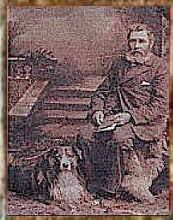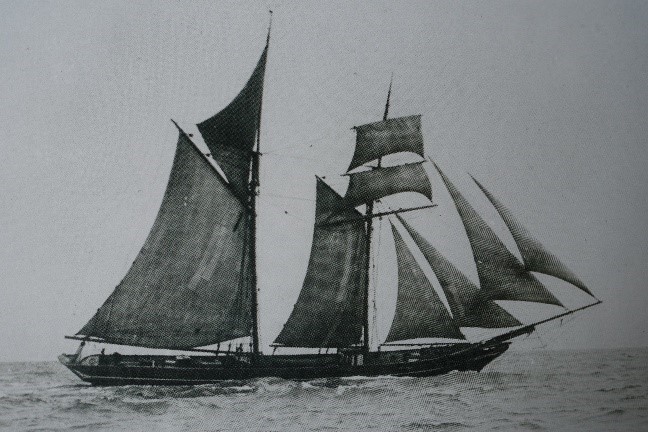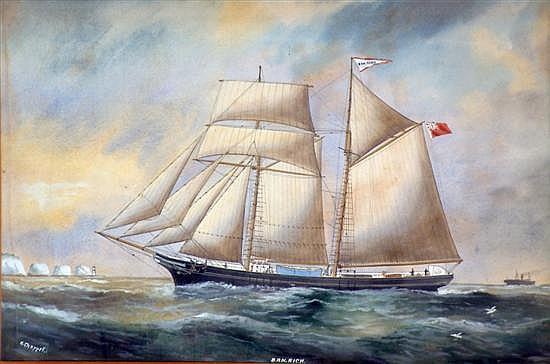Willian Geddie was born in Garmouth on 21st July 1829 into a Speyside shipbuilding family. He served his apprenticeship in Garmouth, later working as a shipwright in Glasgow and Aberdeen. His brother John was born in 1823 and had built three ships in Lossiemouth before going bankrupt in 1863. In 1865 both brothers migrated to Banff and built at least 27 ships mostly at the Duffus Hillock yard near the mouth of the Deveron but also at Patent Slip, Banff Harbour.

William Geddie 1829-1897
All the ships built by the Geddies were built of wood and carried sails. They were used for trading along the East Coast and for voyages to the Baltic countries. Most of them were owned by Banff or Macduff merchants and carried general cargo such as: coal, herring, grain. While they were judged to be fine ships by Lloyds of London, sailing was a dangerous undertaking as evidenced by the fact that of the 27 ships built by the brothers, at least 17 were lost at sea, in some cases with all the crew.
The launching of the Lady Ida Duff illustrates how difficult it could be to manage these boats. During the launch the ship’s bow lightly touched the seabed causing her to roll from side to side. The crew had almost managed to steady her before a slight breeze caused her to roll again. This movement was greatly amplified by the ship’s visitors, mostly boys, rushing to the shore side of the ship for some reason. The ship toppled over and a great number of those on board were tipped into the water. Fortunately, they were all rescued. During the next high tide, the ship was righted and moored.
The advent of steam-powered ships and the railway network spelt the end of sailing ships and their shipbuilders. The last ship built in Banff, the Swift, was on the stocks for three years waiting for a buyer. Eventually the Geddies had to become the managing owners. Tragically the Swift was lost at sea in 1896, less than a year after her completion. Six men were lost with her, including two of William’s sons. William died heartbroken in 1897 and with him went a great Banff industry that carried the name of Banff far and wide.


